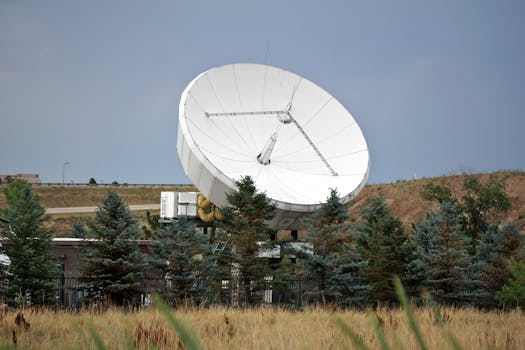Breaking Barriers: How Recent Developments are Transforming Satellite Communication
Recent developments in satellite communication are breaking barriers and transforming the way we communicate. With advancements in technology, satellite communication is becoming more accessible and affordable, opening up new opportunities for individuals and organizations around the world.

Breaking Barriers: How Recent Developments are Transforming Satellite Communication
Breaking Barriers: How Recent Developments are Transforming Satellite Communication. Satellite communication has come a long way since its inception, and recent developments are transforming the way we communicate. With advancements in technology, satellite communication is becoming more accessible and affordable, opening up new opportunities for individuals and organizations around the world.
Introduction to Satellite Communication
Satellite communication involves the use of satellites to transmit and receive data, voice, and video signals. Satellites are launched into orbit around the Earth, where they can receive and transmit signals to and from anywhere on the planet. Satellite communication has been used for a variety of purposes, including telecommunications, navigation, weather forecasting, and remote sensing.
Recent Developments in Satellite Communication
Recent developments in satellite communication have been driven by advancements in technology, including the development of new satellite constellations, improved antenna designs, and advanced signal processing techniques. One of the most significant developments is the launch of low-Earth orbit (LEO) satellite constellations, which offer faster and more reliable communication services. LEO satellites are launched into orbit at an altitude of around 500-800 km, which is much lower than traditional geostationary satellites. This lower altitude reduces the latency and increases the speed of communication, making it possible to support real-time applications such as video conferencing and online gaming.
Transforming Communication with Satellite Technology
Satellite technology is transforming communication in a variety of ways. One of the most significant impacts is the extension of communication services to remote and underserved areas. Satellite communication can provide connectivity to areas where traditional communication infrastructure is lacking, such as rural areas, islands, and disaster zones. Satellite communication is also being used to support emergency response and disaster relief efforts, providing critical communication services when traditional infrastructure is damaged or destroyed.
Conclusion
In conclusion, recent developments in satellite communication are breaking barriers and transforming the way we communicate. With advancements in technology, satellite communication is becoming more accessible and affordable, opening up new opportunities for individuals and organizations around the world. As satellite technology continues to evolve, we can expect to see even more innovative applications and uses for satellite communication, from extending communication services to remote areas to supporting emergency response and disaster relief efforts.


